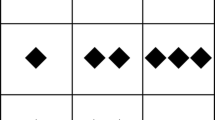Abstract
To begin, I introduce an analysis of interlevel relations that allows us to offer an initial characterization of the debate about the way classical and connectionist models relate. Subsequently, I examine a compatibility thesis and a conditional claim on this issue.
With respect to the compatibility thesis, I argue that, even if classical and connectionist models are not necessarily incompatible, the emergence of the latter seems to undermine the best arguments for the Language of Thought Hypothesis, which is essential to the former.
I attack the conditional claim of connectionism to eliminativism, presented by Ramsey et al. (1990), by discrediting their discrete characterization of common-sense psychological explanations and pointing to the presence of a moderate holistic constraint.
Finally, I conclude that neither of the arguments considered excludes the possibility of viewing connectionist models as forming a part of a representational theory of cognition that dispenses with the Language of Thought Hypothesis.
Similar content being viewed by others
References
Burge, T.: 1979, ‘Individualism and the Mental’, in P. A. French et al. (eds.),Midwest Studies in Philosophy 4, 73–121.
Chater, N. and M. Oaksford: 1990, ‘Autonomy, Implementation and Cognitive Architecture: A Reply to Fodor and Pylyshyn’,Cognition 34, 93–107.
Clark, A.: 1989a,Microcognition, Philosophy, Cognitive Science. and Parallel Distributed Processing, MIT Press, Cambridge, Massachusetts.
Clark, A.: 1989b, ‘Connectionism, Non-conceptual Content and Representational Redescription’, University of Sussex, Brighton, Serial no. CSRP 143.
Dennett, D.: 1971, ‘Intentional Systems’,Journal of Philosophy 8, 87–106.
Feldman, J. and D. Ballard: 1982, ‘Connectionist Models and their Properties’,Cognitive Science 6, 205–54.
Field, H.: 1978, ‘Mental Representation’,Erkenntnis 13, 9–61.
Fodor, J.: 1975,The Language of Thought, Harvester Press, Hassocks, Sussex.
Fodor, J.: 1987,Psychosemantics, MIT Press, Cambridge, Massachusetts.
Fodor, J.: 1980, ‘Methodological Solipsism Considered as a Research Strategy in Cognitive Psychology’,Behavioral and Brain Sciences 3, 63–110.
Fodor, J.: 1991, ‘A Modal Argument For Narrow Content’,The Journal of Philosophy 83, 5–26.
Fodor, J. and B. McLaughlin: 1990, ‘Connectionism and the Problem of Systematicity; Why Smolensky's Solution Doesn't Work’,Cognition 35, 183–204.
Fodor, J. and Z. W. Pylyshyn: 1988, ‘Connectionism and Cognitive Architecture: A Critical Analysis’,Cognition 28, 3–71.
Goldman, A. I.: 1993, ‘The Psychology of Folk Psychology’,Behavioral and Brain Sciences 16, 15–28.
Hanson, S. and D. J. Burr: 1990, ‘What Connectionist Models Learn: Learning and Representation in Connectionist Networks’,Behavioral and Brain Sciences 13, 471–89.
Hebb, D. O.: 1949,The Organization of Behavior, John Wiley, New York.
Horgan, T. and J. Tienson: 1989, ‘Representations without Rules’,Philosophical Topics 17, 147–74.
McClelland, J. L., D. E. Rumelhart, and G. E. Hinton: 1986, ‘The Appeal of Parallel Distributed Processing’, in Rumelhart and McClelland (1986a), pp. 3–44.
Pettit, P. and J. McDowell (eds.): 1986,Subject, Thought and Context, Oxford University Press, Oxford.
Putnam, H.: 1975, ‘The Meaning and ‘Meaning’’, in H. Putnam,Philosophical Papers, Vol. 2: Mind, Language and Reality Cambridge University Press, Cambridge, pp. 215–71.
Putnam, H.: 1988,Representation and Reality, MIT Press, Cambridge, Massachusetts.
Ramsey, W., S. Stich, and J. Garon: 1990, ‘Connectionism, Eliminativism, and the Future of Folk Psychology’, in J. Tomberlin (ed.),Philosophical Perspectives, Vol.4, Ridgeview, Atascadero, California, pp. 499–533.
Rumelhart, D. E., G. E. Hinton, and J. L. McClelland: 1986, ‘A General Framework for Parallel Distributed Processing’, in Rumelhart and McClelland (1986a), pp. 45–76.
Rumelhart, D. E. and J. L. McClelland (eds.): 1986a,Parallel Distributed Processing Explorations in the Microstructure of Cognition, 2 vols., MIT Press, Cambridge, Massachusetts.
Rumelhart, D. E. and J. L. McClelland: 1986b, ‘PDP Models and General Issues in Cognitive Science’, in Rumelhart and McClelland (1986a), pp. 110–46.
Smolensky, P.: 1988, ‘On the Proper Treatment of Connectionism’,Behavioral and Brain Sciences 11, 1–74.
Woodfield, A. (ed.): 1982,Thought and Object. Essays on Intentionality, Clarendon Press, Oxford.
Author information
Authors and Affiliations
Rights and permissions
About this article
Cite this article
Corbí, J.E. Classical and connectionist models: Levels of description. Synthese 95, 141–168 (1993). https://doi.org/10.1007/BF01064585
Issue Date:
DOI: https://doi.org/10.1007/BF01064585




